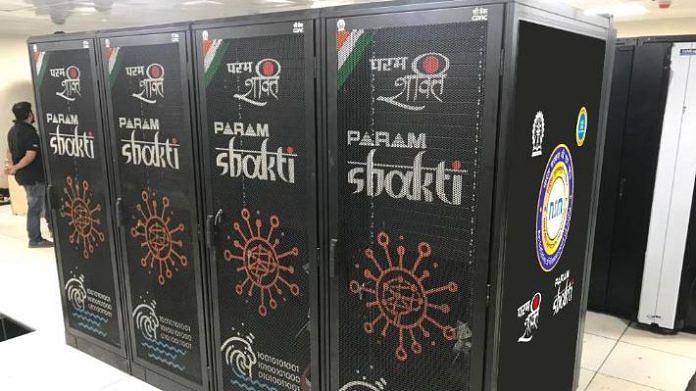New Delhi: The central government has approved the building and installation of 11 new supercomputers in research institutes across India, ushering in the next phase of the National Supercomputing Mission (NSM).
By 2022, the government aims to install 73 indigenous supercomputers across the country.
The NSM is being steered by the Ministry of Electronics and Information Technology and the Department of Science and Technology (DST). It is being implemented through Pune’s Centre for Development of Advanced Computing (C-DAC) and Bengaluru’s Indian Institute of Science (IISc).
Supercomputers have very high processing capabilities, required in applications such as climate modelling, weather predictions, national security and government information systems.
First phase
In the first phase of the NSM, parts for the supercomputers were imported and assembled in India. The first supercomputer assembled indigenously, called Param Shivay, was installed in IIT (BHU) this year, and was inaugurated by Prime Minister Narendra Modi, also the Varanasi MP.
Similar systems Param Shakti and Param Brahma were installed at IIT-Kharagpur and IISER, Pune.
Three more supercomputers will be operational by 2020 — at IIT-Kanpur, JN Centre for Advanced Scientific Research, Bengaluru, and IIT-Hyderabad.
Future plan
Milind Kulkarni, head of the NSM, told ThePrint that the supercomputers installed so far are about 60 per cent indigenous, with the motherboards developed by Intel.
However, he said the 11 systems in the next phase will have processors designed by C-DAC, and will have a cumulative capacity of 10 petaflops — where ‘flop’ stands for floating point operations per second, indicating an extremely high computing power.
The C-DAC processor is undergoing testing and will be ready by March 2020, Kulkarni said. He said C-DAC is partnering with industry to market this indigenous processor, which is likely to bring down the cost of a computer motherboard by 10 per cent.
The 11 new supercomputers will be installed at different IITs, NITs and IISERs.
“One system will be installed at C-DAC exclusively for small and medium enterprises, so that they can train employees as well as work on supercomputers at very low cost,” Kulkarni said.
In the third phase of the NSM, the aim will be to build fully indigenous supercomputers.
The government has also approved a project to develop a cryogenic cooling system, which rapidly dissipates the heat generated by a computing chip. This will be built together by IIT-Bombay and C-DAC.
The total budget for the entire NSM is Rs 4,500 crore, funded jointly by the MEITY and the DST.
Also read: Next generation supercomputers still far from reality, says Nobel laureate Serge Haroche



